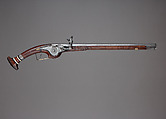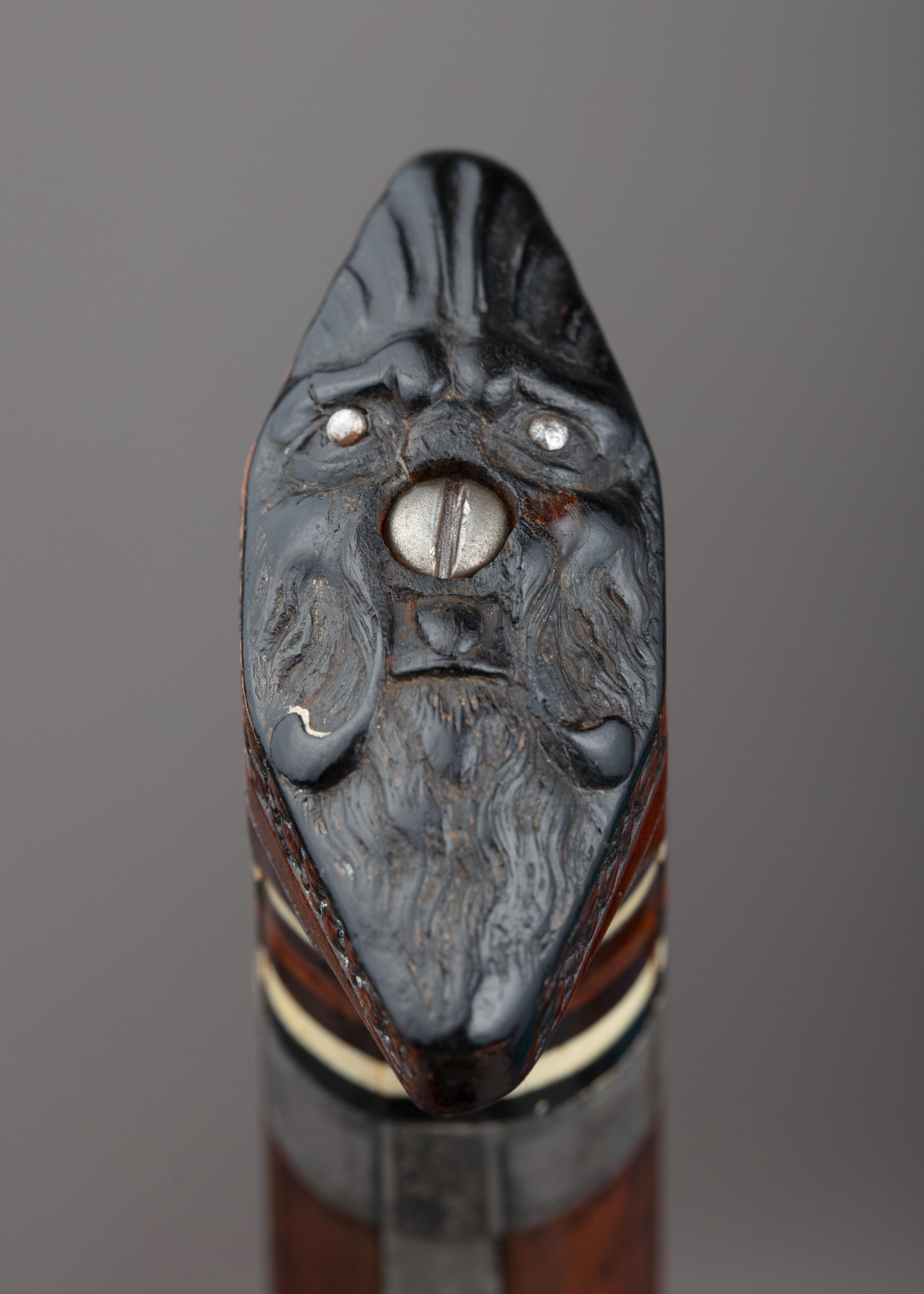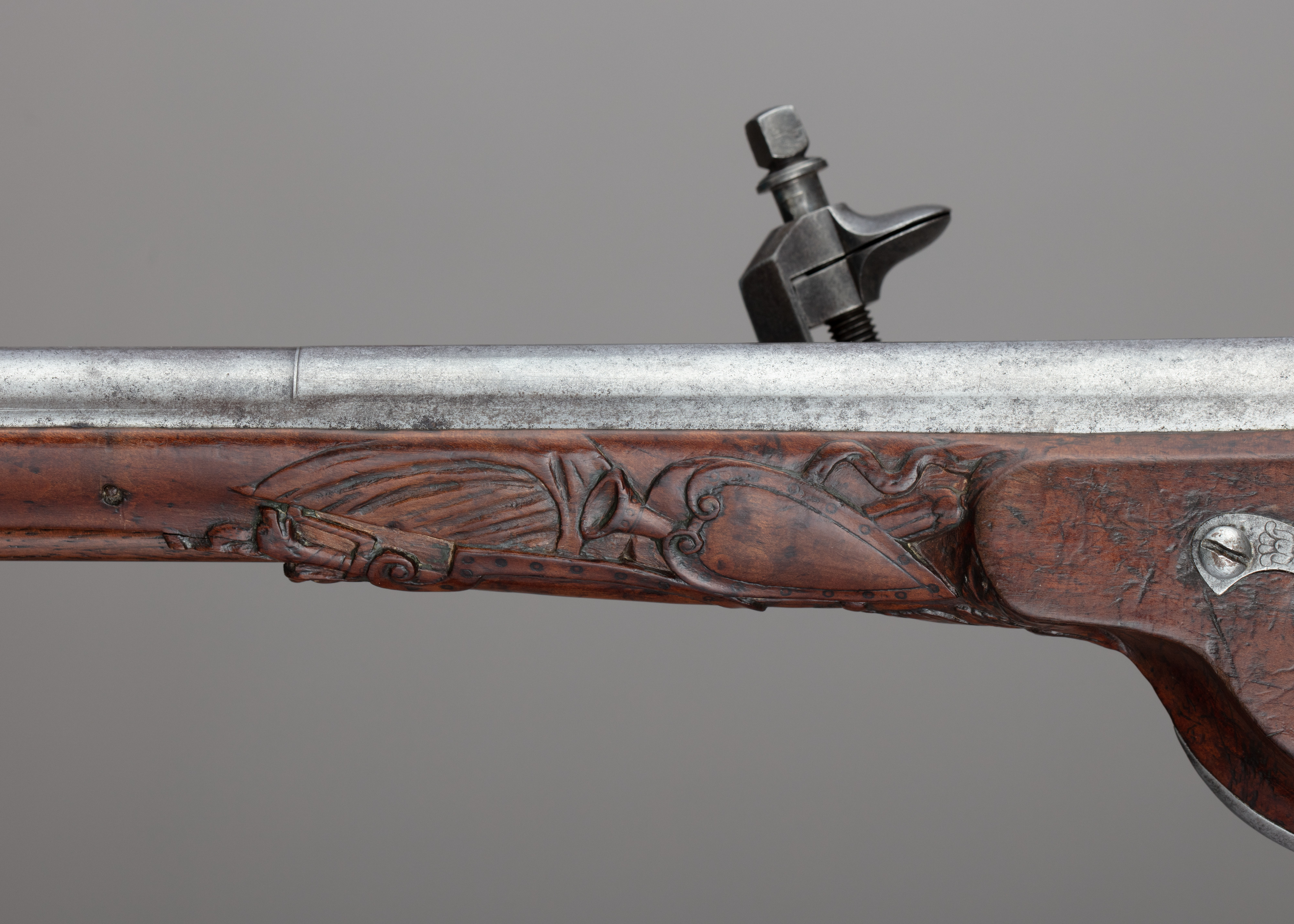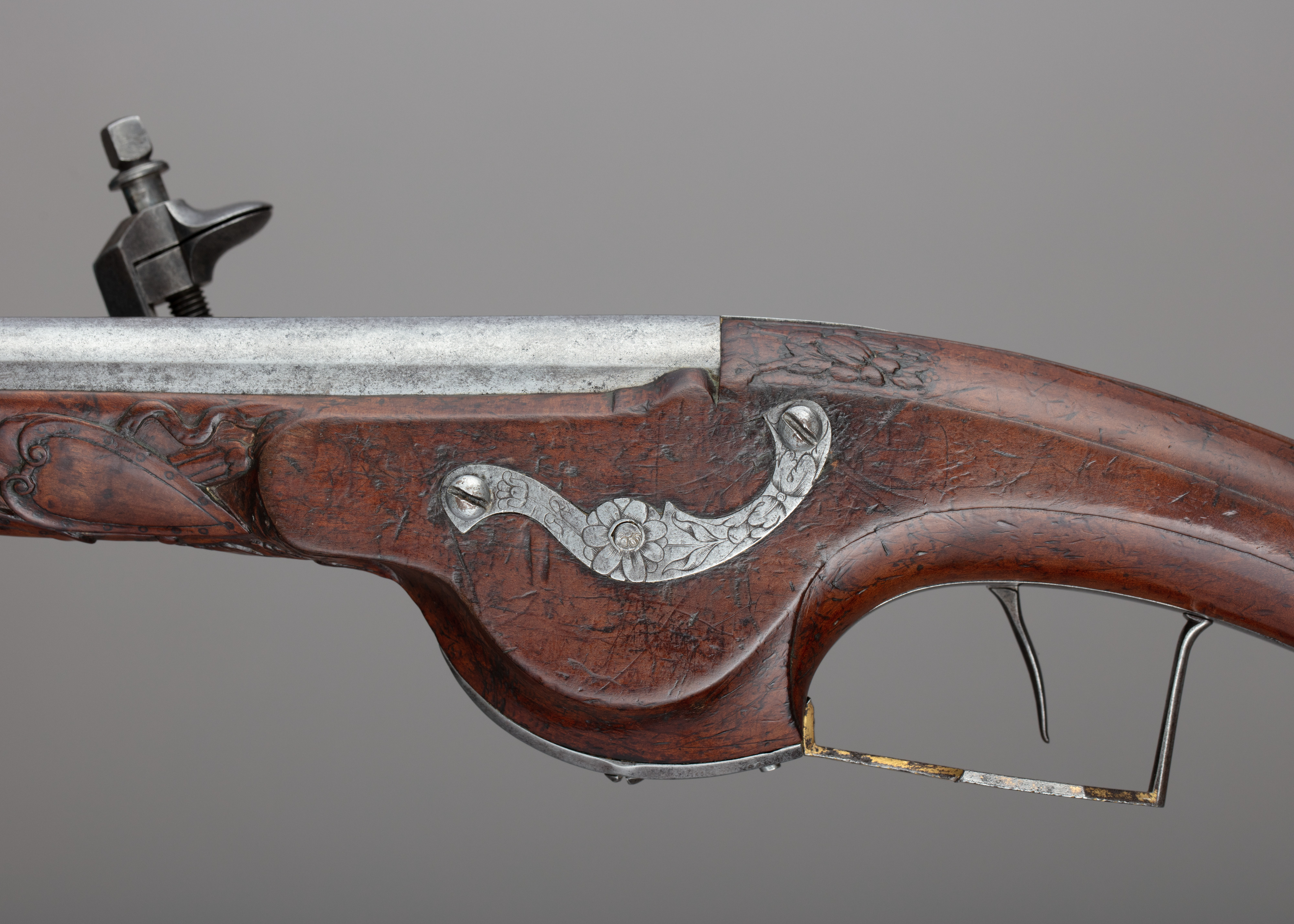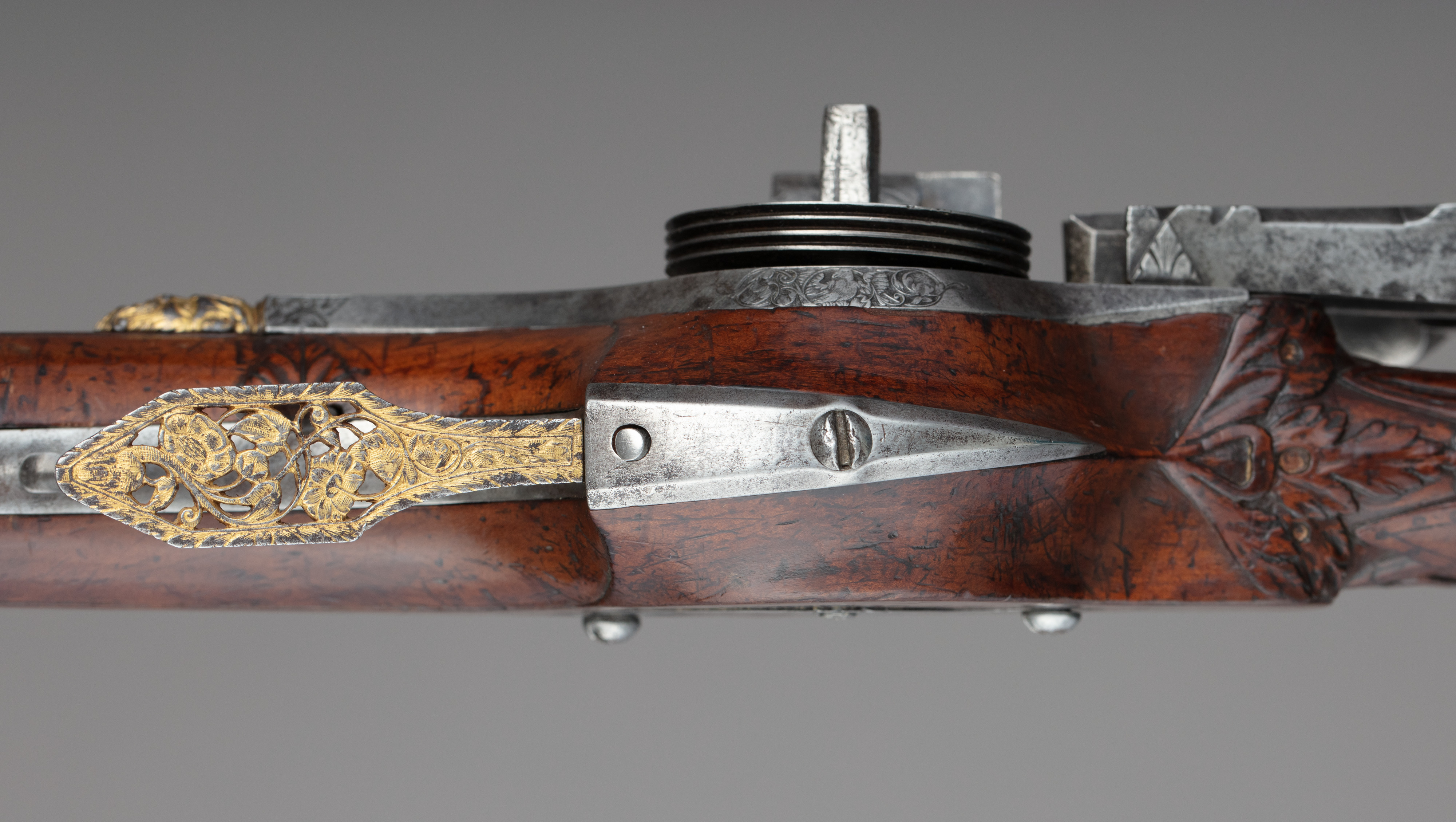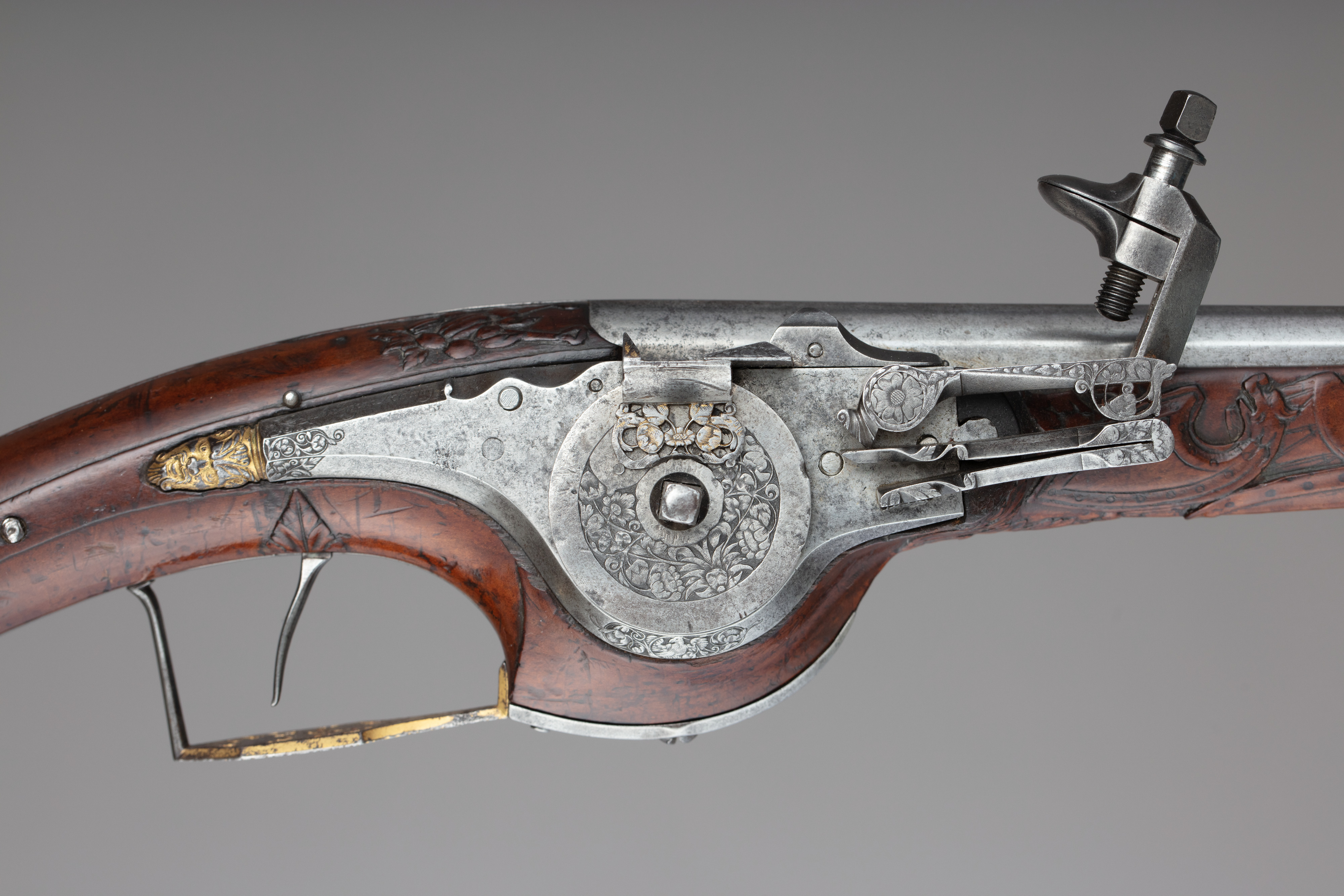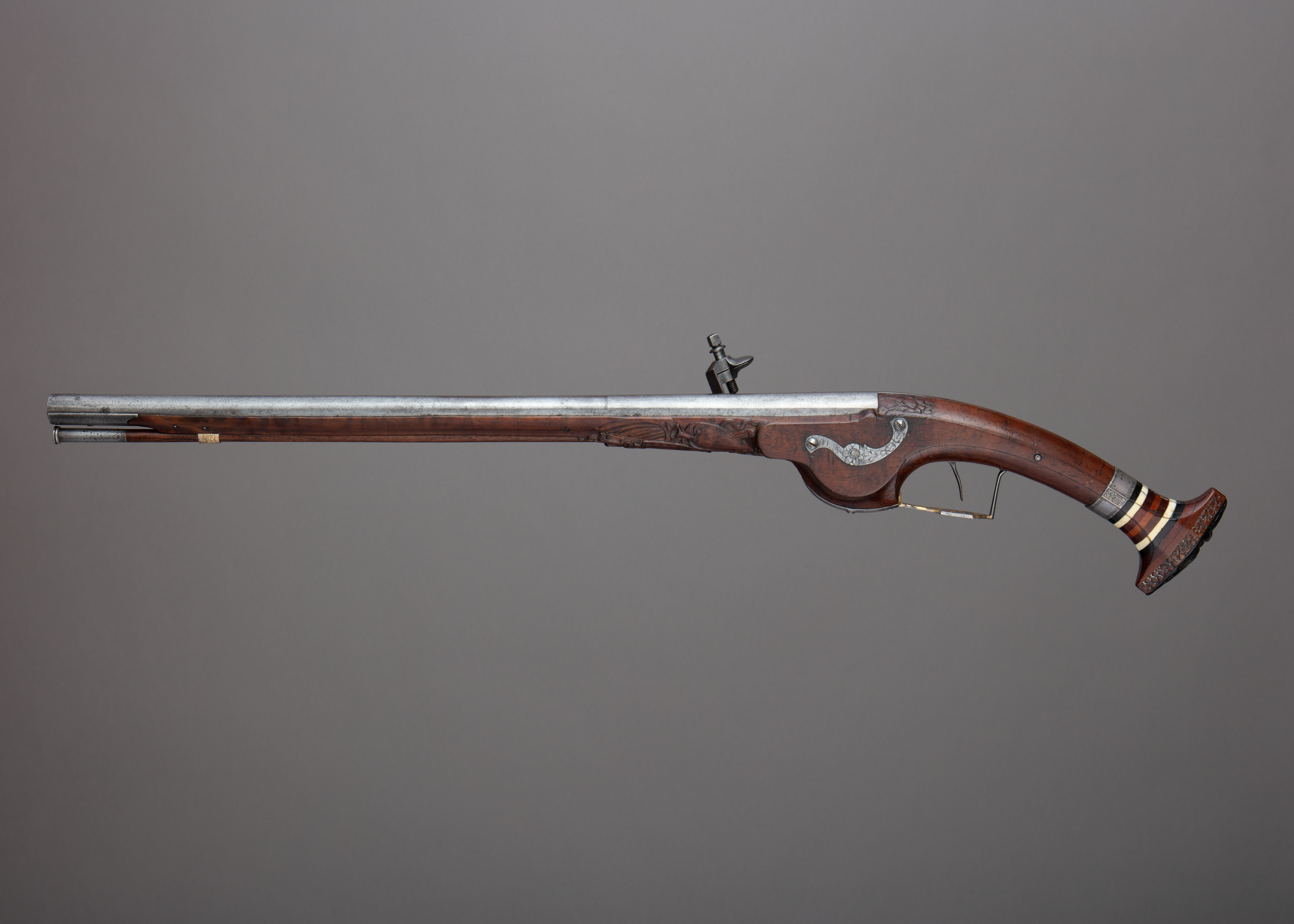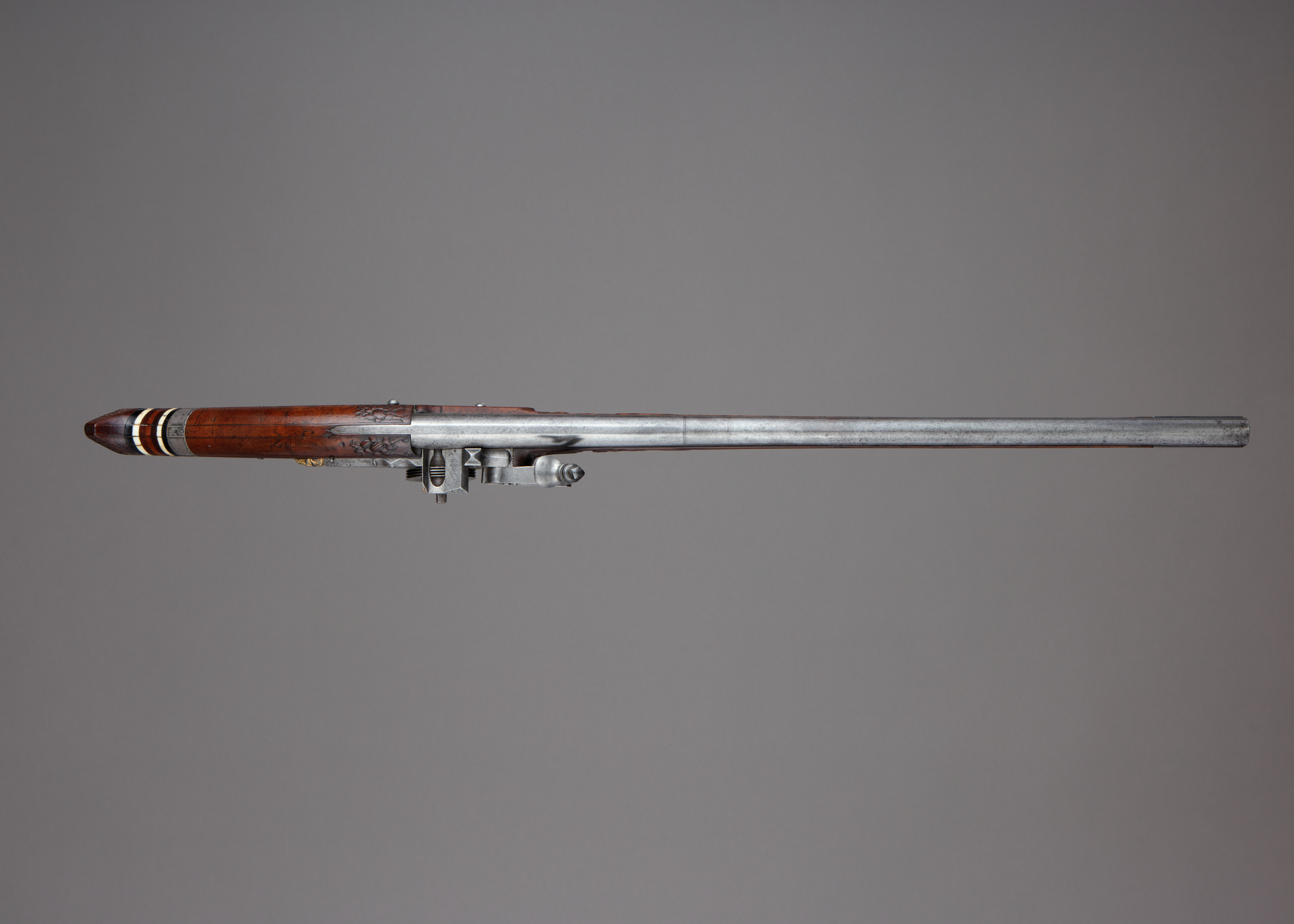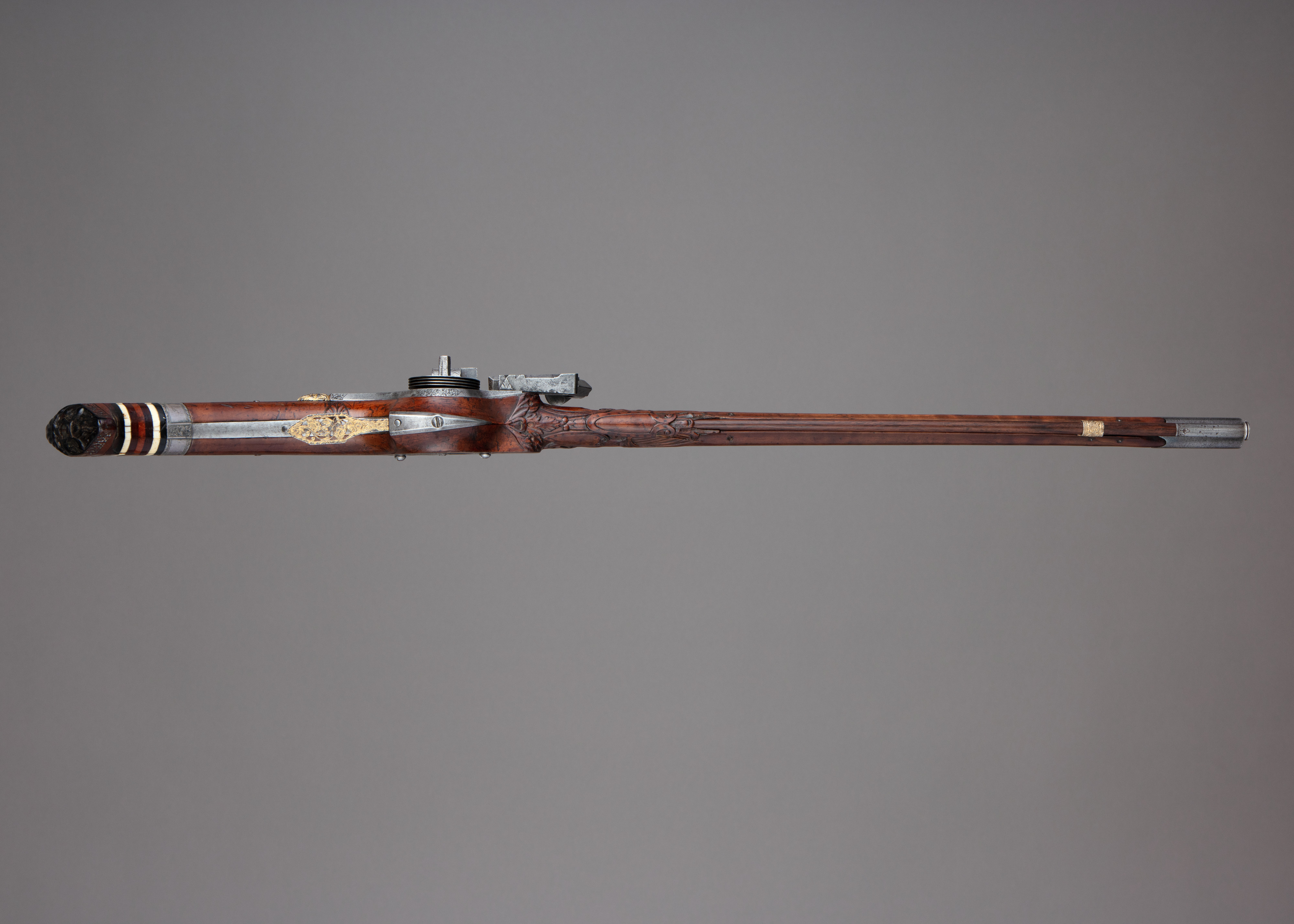Wheellock Pistol
Gunsmith Pierre Cisteron French
Pierre Cisteron was an eminent gunmaker working in the town of Figeac in southwestern France. Although little is known about his life today, the firearms that bear his signature demonstrate creativity and technical mastery. His abilities are clearly exhibited in this long pistol, which forms a pair with one in the collection of the Musée de l’Armée, Paris.
In its general form and some aspects of its decoration, the pistol conforms to the standard design of fine French firearms from the period. These characteristics include the plain barrel, the external wheel adorned with minimal and precise engraved designs, the lockplate chiseled at the rear with a mask in low relief, and the angular trigger guard fretted with a delicate floral pattern are all classic elements of the repertoire of leading French gunmakers of the time.
By contrast, the adornment of the grip with colorful washers right above the pommel is unique to this pistol and its mate. The carving of the stock with trophies of arms is another original feature, one, however, that distinguishes all known pistols by Cisteron, most notably a pair of wheellock pistols in the Wallace Collection, London (inv. A 1180–A 1181), and a pair of flintlock pistols that is also included in this exhibition.
Thanks to the promised gifts of this pistol and the pair of flintlock pistols by Cisteron, the Museum will be able to showcase this master’s versatility and his original contributions to the gunmaker’s art more fully than any other collection or museum within or outside of France.
Due to rights restrictions, this image cannot be enlarged, viewed at full screen, or downloaded.
This artwork is meant to be viewed from right to left. Scroll left to view more.
